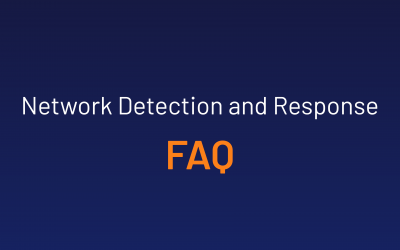AI has been employed within security products for decades. However, until fairly recently the vast majority of AI usage would have been predominantly underpinned by rule-based algorithms and bayesian reasoning.
In the last few years, many security solution providers have expanded detection, analysis, and prevention capabilities through the use of supervised and unsupervised machine learning (ML) applied to system logs, alerts, NetFlow data, and even full packet capture.
These advancements are quite worthy. At the same time, we remain short of where we need to be as an industry. The root problem in cybersecurity here in 2023 is that we still do not have enough human capital to stave off attackers, nor will we be able to close the gap any time soon.
In order to really change the game, the security industry must accelerate its adoption of more advanced forms of AI, like Unsupervised Neural Networks.
Supervised Machine Learning: A step beyond rule-based algorithms and Bayesian reasoning
Let’s start with supervised machine learning. Supervised ML is the most widely used form of AI in cybersecurity today. It involves training a machine learning model on a labeled dataset, where each data point is labeled as either “good” or “bad”. The model then uses this labeled dataset to learn to identify patterns and characteristics that are associated with “bad” data, and uses this information to predict whether new data is “good” or “bad”.
One example of a cybersecurity solution that uses supervised ML is an email spam filter. The filter is trained on a dataset of labeled emails, where each email is labeled as either “spam” or “not spam”. The model learns to identify patterns and characteristics that are associated with spam emails, such as certain keywords, links, or attachments. When a new email arrives, the model analyzes it and predicts whether it is spam or not based on these learned patterns.
However, supervised ML has some limitations. It requires a labeled dataset, which can be time-consuming and expensive to create. It also assumes that the labeled data is representative of the entire population, which may not always be the case.
This is where unsupervised ML comes in.
Unsupervised Machine Learning: Scaling past labeled data sets
Unsupervised machine learning does not require a labeled dataset. Instead, it analyzes the data to identify patterns and anomalies that are not visible to the human eye. It can identify new and unknown threats that have not been seen before, making it a valuable tool in cybersecurity.
One example of a cybersecurity solution that uses unsupervised machine learning is a network intrusion detection system (IDS). The IDS analyzes network traffic to identify patterns and anomalies that may indicate a potential threat. It can detect new and previously unknown attacks, even if there is no signature or pattern associated with them.
However, unsupervised machine learning also has its limitations. It can produce a high number of false positives, which can overwhelm security teams and lead to alert fatigue.
Unsupervised neural networks move past these shortcomings.
Unsupervised Neural Networks: Getting to a true virtual security analyst
Unsupervised neural networks are the most advanced form of AI in cybersecurity today. They can analyze large and complex datasets to identify patterns and anomalies that are not visible to the human eye. They can learn from the data to identify new and unknown threats, and can reduce the number of false positives compared to traditional unsupervised machine learning.
One example of a cybersecurity solution that uses unsupervised neural networks is a behavior-based threat detection system. The system analyzes the behavior of users and devices on a network to identify anomalies and potential threats. It can detect new and unknown attacks, even if they do not match any known patterns or signatures.
In summary, while supervised machine learning is the most commonly used form of AI in cybersecurity today, unsupervised machine learning and unsupervised neural networks represent the next steps forward in AI capabilities. Unsupervised machine learning can identify new and unknown threats that have not been seen before, while unsupervised neural networks can reduce the number of false positives and detect previously unknown threats.
Benefits of Unsupervised Neural Networks in Cybersecurity
Deep learning systems that leverage unsupervised neural networks provide a major step forward in helping security personnel find and stop never-before seen malware, novel attacks, ransomware, unknown threat variants, insider attacks, and more. Benefits include:
- Zero-day discovery
- Malware mutation discovery
- Faster threat analysis
- Faster suspicious activity discovery
- Focused threat hunting
- Dwell time reduction
- SOC/SecOps efficiency
- Evergreen threat detection
Check out our white paper where we describe the above benefits in greater depth, as well as how ThreatWarrior leverages unsupervised neural networks and deep learning to power our network detection and response (NDR) platform. If you have any questions about what we have shared, feel free to reach out. We love to talk about AI and how ThreatWarrior plans to advance its impact on cybersecurity.



